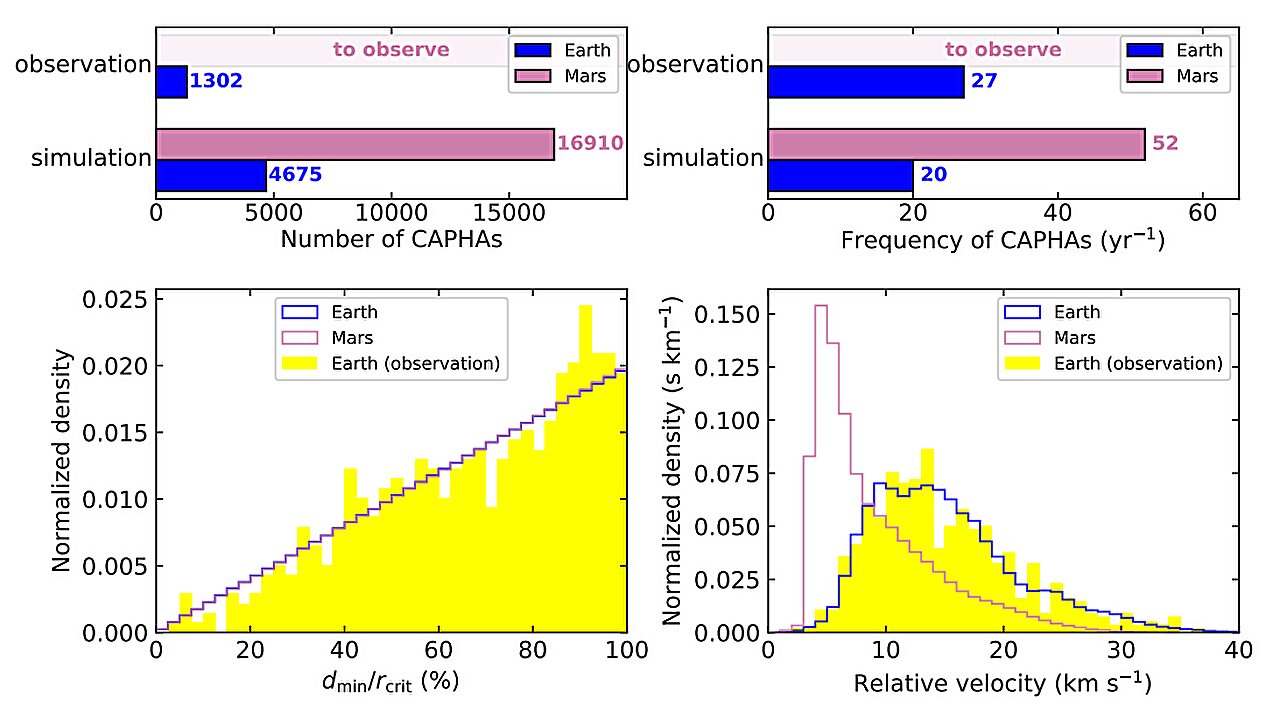× close
A team of astronomers at Nanjing University has found evidence that Mars likely has more potentially hazardous asteroids in its path than Earth. In their study, posted on the arXiv preprint server, the group investigated the number of potentially hazardous asteroids that are big enough to cause a major impact should they strike Mars and compared them to similar estimates for Earth.
A lot of work is currently being done to try to identify near Earth objects (NEOs)—asteroids or comets—that might be on a collision course with our planet. The hope is that if a large NEO is found that is likely to strike Earth, a means could be found to change its course. In this new effort, the research team looked at the same possible hazard for future humans living on Mars.
In their work, the researchers looked at a subset of NEOs called potentially hazardous asteroids (PHAs) that are large enough to cause problems if they strike Mars and that appear likely to do so—or to at least approach closely.
In looking at data from past Mars strikes, including data for asteroids with a path that intersects Mars and the proximity of Mars to the asteroid belt, the researchers created simulations showing how often PHAs are likely to strike Mars.
They found that the likelihood of a PHA striking Mars is approximately 2.5 to three times that of Earth. More specifically, they found that there are approximately 17,000 PHAs that could slip close to, or strike Mars, and approximately 4,700 for Earth.
The team further suggests that there are 52 PHAs that are likely on a path with Mars that can be seen from the Earth. This suggests that if the timing could be determined, it should be possible to witness a collision or near miss.
The research team also notes that new telescopes coming online in the near future are likely to give much better estimates of NEOs (or NMOs, in the case of Mars) and also PHAs for both.
More information:
Yufan Fane Zhou et al, MARTIANS (MARs2020, TIANwen and So on) would see more potentially hazardous asteroids than Earthlings, arXiv (2024). DOI: 10.48550/arxiv.2405.02614
© 2024 Science X Network

Dr. Thomas Hughes is a UK-based scientist and science communicator who makes complex topics accessible to readers. His articles explore breakthroughs in various scientific disciplines, from space exploration to cutting-edge research.






